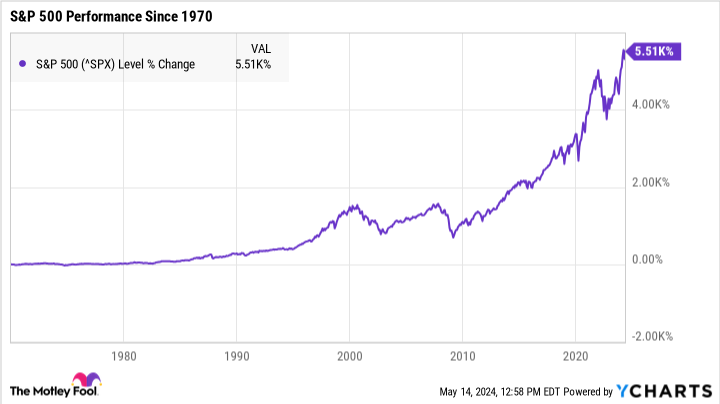It’s no secret that we’re in a new bull market. Investors have enjoyed soaring stock prices as the S&P 500 (SNPINDEX: ^GSPC) has climbed by more than 46% from its lowest point in late 2022.
But now that we’re over a year-and-a-half into this bull market, some investors may be wondering just how much longer it might last. While there’s no magic crystal ball to look into the future and know precisely how long we have until another downturn, it can sometimes be helpful to look at historical data.
To be clear, historical performance doesn’t predict future returns. Even if there are clear trends with previous bull markets, it doesn’t necessarily mean we’ll see something similar now. However, history can provide a ballpark estimate of how long this bull market could potentially last.

Bull markets last longer than you might think
There’s good news when it comes to the average length of market downturns and upswings: Bull markets, on average, last far longer than bear markets.
According to data from investment group Bespoke, the average S&P 500 bull market since 1929 has lasted 1,011 days — or just under three years. There were a few outliers, such as the bull markets from 1987 to 2000 (which lasted a whopping 4,494 days) and 2009 to 2020 (3,999 days). There were also five separate bull markets that each lasted under 100 days, most of which took place throughout the 1930s.
The median length of a bull market, then, was around 522 days — or around a year-and-a-half. While that may be concerning, considering we’re around 19 months into the current bull market, this doesn’t necessarily mean that a downturn is right around the corner.
Of the last 10 S&P 500 bull markets dating back to 1970, half of them have lasted at least 1,000 days. All but two have gone on for longer than the median 522 days. Bull markets appear to be lasting longer as time goes on, due at least partly to the fact that economists and regulators are much better at preventing severe downturns and recessions now than they were 100 years ago.
Bear markets, on the other hand, are generally much shorter than bull markets. The average bear market lasts just 286 days, according to the Bespoke data, with the median landing at 240 days.
How to prepare for a potential bear market
Again, there’s no way to know for certain whether another downturn is on the horizon. But the market can’t keep surging forever, so we’ll face a bear market at some point. Regardless of when exactly that may happen, you can take steps to start preparing now.
The best way to survive any downturn is to invest in stocks of healthy companies and hold them for the long term. Even if stock prices plummet, you won’t technically lose any money unless you sell your investments. Quality stocks are more likely to rebound from slumps, so by simply holding your investments until the market inevitably recovers, there’s a good chance you’ll come out the other side unscathed.
Now is also the time to double-check that every stock in your portfolio deserves to be there. If you currently own any less-than-great stocks, now may be the best time to sell them while stock prices are still high.
Nobody can say exactly how long the current bull market will last, but if history shows us anything, it’s that good economic times generally last much longer than the slumps. By investing in the right places and maintaining a long-term outlook, you can rest easier knowing your portfolio is as protected as possible.
Should you invest $1,000 in S&P 500 Index right now?
Before you buy stock in S&P 500 Index, consider this:
The Motley Fool Stock Advisor analyst team just identified what they believe are the 10 best stocks for investors to buy now… and S&P 500 Index wasn’t one of them. The 10 stocks that made the cut could produce monster returns in the coming years.
Consider when Nvidia made this list on April 15, 2005… if you invested $1,000 at the time of our recommendation, you’d have $578,143!*
Stock Advisor provides investors with an easy-to-follow blueprint for success, including guidance on building a portfolio, regular updates from analysts, and two new stock picks each month. The Stock Advisor service has more than quadrupled the return of S&P 500 since 2002*.
*Stock Advisor returns as of May 13, 2024
Katie Brockman has no position in any of the stocks mentioned. The Motley Fool has no position in any of the stocks mentioned. The Motley Fool has a disclosure policy.
How Long Might the S&P 500 Bull Market Last? Here’s What History Says. was originally published by The Motley Fool
Source Agencies

